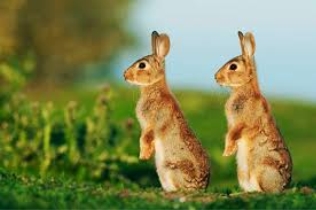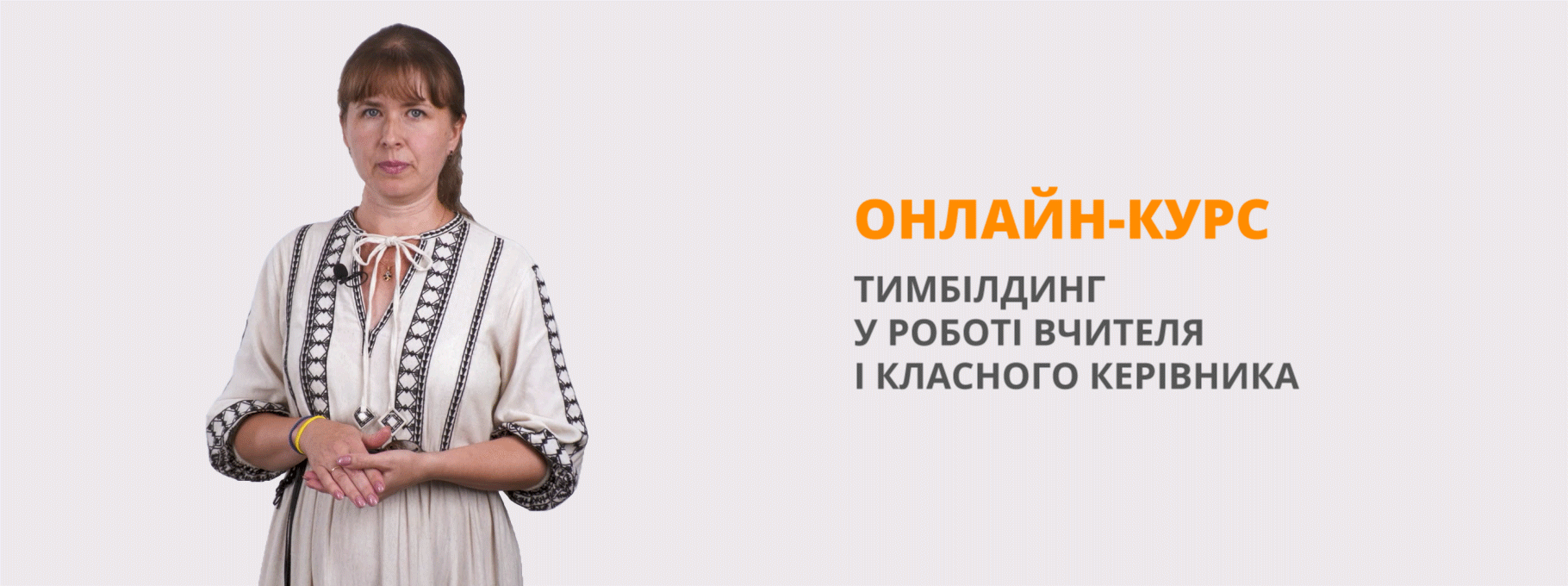План-конспект уроку "British wildlife"
Theme of the lesson:
British wildlife (English Plus 1,(second edition) Oxford)

Ternopil - 2017
Theme: British wildlife
Objectives: to practice active vocabulary; to practice spelling animals words; to develop speaking and writing skills;
- to develop critical thinking and creativity; to arouse students’ curiosity to the subject of the lesson.
- to develop pupils' communicative skills while discussing unprepared situations and
expressing comments on the subject of the lesson;
Procedure of the lesson:
l. Greeting.
Greet the students and ask about their mood.
Good afternoon, students! Glad to see you! How are you?
Good afternoon, teacher! We’re fine, thanks! And you? I’m fine, thanks!
Conversation about today’s weather.
Is it sunny today? (rainy, snowy, foggy, cold)
What season is it now?
What is the next season?
What do you like doing in winter?
Today we’ll have some guests at the lesson, so, please don’t be afraid and be active.
II. Main body of the lesson.
Warming u.
Please look at your desks. Each of has got a paper with a riddle on his desk. Please read it out and guess the answer. T. sticks the answers on the board.
So as you’ve guessed already, today we’ll continue speaking about different wild animals, play watch the video about. the birds and animals that live in the UK and some of the dangers facing them and play some games.
Riddles.
- It’s a long green animal with sharp (гострий) teeth. It is a … (crocodile)
- It’s a big animal with a very long nose. It’s an …(elephant)
- It is a tall animal with a very long neck. It’s a ….(giraffe)
- It looks like a horse. It’s got black and white stripes (смуги). It’s a …(zebra)
- It’s a king of animals. It’s a ….(lion)
- It is a big black and white bird that can’t fly. It’s a …(penguin)
- It is a pink bird that lives near water. It’s a …(flamingo)
- It is a very funny animal that likes bananas. It’s a …(monkey)
- It lives in Australia and it can jump really high. It’s a …(kangaroo)
- It is the biggest cat animal with orange and black stripes (смуги). It’s a …(tiger)
- It has got one or two humps (горб) on its back. It’s a …(camel)
- It is a long animal that hasn’t got legs. It’s a …(snake)
- It is a big and grey animal. It lives in Africa. It lives in the river. It’s …(hippo)
- It is small and colorful. It can fly. It eats honey. It’s …(butterfly)
- It is a small brown animal. It can climb trees and eat nuts. It has a nice tail. It’s …(squirrel)
- It is black and white. It is rare. It eats bamboo. It’s …(panda)
III Checking hometask
Your hometask for today was to do ex. 2 and 3 on page 40 from the students book.
IV Watching the video
Background
The UK contains small number of species of wild animals. Many species died out during the last Ice Age. After that, the UK was cut off from mainland Europe by the sea.. Over the last few thousand years, most of the larger mammals, including wolves, bears, have been hunted by humans, and in more recent times, large farming development and construction have destroyed the habitats of many more animals.
Today, it’s still possible to see red deer, foxes, snakes, frogs, hedgehogs, badgers, rabbits, and – if you’re lucky – hares, bats and mice in the wild, as well as over 200 species of birds.
Pre-watching: Students read through the questions and allow students time individually to think about their answers. Put them into 3 teams to discuss their answers, then ask some students to report back to the class.
Answer the questions.
- What wild animals are there in your country?
- Do you know where they live?
- Do you know any wild animals that live in the UK?
Comprehension check
-
Watch the video. Choose the correct answers.
- Where do otters live?
a in trees b on land
c on land and in water
- What is an adder?
a a snake b a mammal c a bird
- Where are grey squirrels from?
a Europe b North America c the UK
There were mentioned a lot of wild animals. Name all the animals that you remember.
Watch again. Match the descriptions with the animals that you see in the video.
Pre-watching: Ask students to match the animals they remember before watching the video again. Watch again. Match the descriptions with the animals that you see in the video.
Answers: 1 a red deer 2 a red squirrel 3a barn owl 4 a toad 5 a badger 6 an otter
Play the video to check their answers.
Writing
Match the questions with the answers in the box. Then watch again and check your answers.
Pre-watching: Ask students to try to answer the questions from memory. Then watch the video again to check answers.

Which animal in the video …
- is the largest in Britain?
- normally eats fish?
- is about 60 cm long?
- is in danger from humans?
- are very rare in the wild?
- comes from North America?
Answers: 1 the red deer 2 the otter 3 the adder 4 the hedgehog 5 the red squirrel
6 the grey squirrel
Complete the sentences with the correct form of the verbs. Use one word for each gap.
Pre-watching: Read through the sentences together and check understanding. Students should write the verbs.
Ask students to complete the sentences. Play the video again if necessary.
- Red deer are quite common. You can often them in the UK.
- The British Wildlife Centre is the best place to about wildlife in Britain.
- Otters can very quickly because of their strong tails.
- Adders can bite but they can’t humans.
- Grey squirrels all the nuts and fruit that red squirrels like.
- The Wildlife Centre the red squirrels and gives them a special place to live.
Answers: 1 see 2 learn 3 swim 4 kill 5 eat 6 protecs
Speaking
Extension
Ask students to read through the questions and think about their answers before they work in pairs. Finally, ask some students to report back to the class.
Look at the photos and answer the questions. Photo A
- What animal can you see in the photo?
- What can you remember about this animal?
- Do you like it ?
- Have you got this animal in your country? If so, where does it live?
Photo B
- What animal can you see in the photo?
- Where is it?
- What can you remember about this animal?
- Do you like it?
Have you got them in your country? If so, where do they live?
Summing up.
What do you learn at the lesson? Can you name British wildlife animals? What activity you like the best?
Setting hometask. For the next time write a project about wild animal in danger and be ready to represent it to your classmates.
Evaluation. You were great. Thank you for your work. And your marks are…
You were great. I’m proud of you. I want you be confident and I know that you are champions – you’ve got eye of the tiger. Lets sing together.
Song
Roar (Lyrics)
I used to bite my tongue and hold my breath
Scared to rock the boat and make a mess
So I sat quietly, agreed politely
I guess that I forgot I had a choice
I let you push me past the breaking point
I stood for nothing, so I fell for everything
You held me down, but I got up (hey!)
Already brushing off the dust
You hear my voice, your hear that sound
Like thunder, gonna shake your ground
You held me down, but I got up
Get ready 'cause I've had enough
I see it all, I see it now
I got the eye of the tiger, a fighter
Dancing through the fire
'Cause I am the champion, and you're gonna hear me roar
Louder, louder than a lion
'Cause I am a champion, and you're gonna hear me roar!
Oh oh oh oh oh oh oh oh
Oh oh oh oh oh oh oh oh
Oh oh oh oh oh oh oh oh
You're gonna…
Tell me what animals did you see in the video
Thank you. Goodbye.
Video script
British wildlife
There are a lot of different wild animals in the UK. There are amazing birds like this barn owl with its beautiful feathers, and amphibians like this toad. There are small mammals like weasels, and larger mammals like polecats, stoats and badgers. The largest British mammals are red deer, and they are quite common. You can see them in many parts of the UK.
Luckily here at the British Wildlife Centre in Newchapel, England you can see all of these animals and it’s the best place to learn more about British wildlife.
This is an otter. Otters are mammals that live on land and in the water. Otters can swim very quickly because they’ve got a very strong tail and special fur. They usually eat fish, but can also eat small mammals, birds and reptiles like snakes.
This is a snake called an adder. It’s about sixty centimetres long. Adders are the only poisonous snake in the UK. They can bite, but they can’t kill a human.
But life in the wild is difficult for some British animals, and many of them need our help. Mammals like hedgehogs are in danger from human activity such as farming and construction.
Red squirrels are very rare in the wild and they’re in danger. This is because there are a lot of grey squirrels from North America which live in the UK now. These grey squirrels eat all the nuts and fruit, so there isn’t any food for the red squirrels.
Here at the centre, they can protect the red squirrels in this special place for them. The squirrels can run around, climb the trees and eat a lot of food. But the red squirrels can’t leave, and there aren’t any grey squirrels here, so they’re safe.
The Wildlife Centre does great work looking after animals like the red squirrels. But the most important thing they do is teach us how we can all protect our animals in the wild.
|
barn owl |
/ˈbɑːnaʊl/ |
сова |
|
feather |
/ˈfɛðə/ |
пір’я |
|
amphibian |
/amˈfɪbɪən/ |
земноводна тварина |
|
mammal |
/ˈmam(ə)l/ |
ссавці |
|
weasel |
/ˈwiːz(ə)l/ |
куниця |
|
polecat |
/ˈpəʊlkat/ |
тхір лісовий |
|
stoat |
/ˈstəʊt/ |
горностай |
|
badger |
/ˈbædʒɚ/ |
борсук |
|
otter |
/ˈɑː.tɚ/ |
видра |
|
fur |
/fɜː(ɹ)/ |
хутро |
|
reptile |
/rɪpˈtaɪl/ |
плазун |
|
adder |
/æd.ɚ/ |
гадюка |
|
poisonous |
/ˈpɔɪzənəs/ |
отруйний |
|
hedgehog |
/hɛʤhɒɡ/ |
їжак |
|
farming |
/ˈfɑːmɪŋ/ |
фермерство |
|
construction |
/kənˈstrʌkʃən/ |
будівництво |
1


про публікацію авторської розробки
Додати розробку
